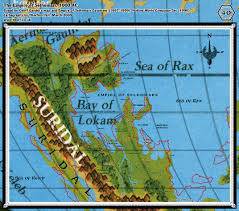Water damage is an unfortunate and often unexpected event that can cause significant disruption to homes and businesses alike. In Vancouver, WA, a city known for its wet climate and frequent rainfall, the risk of water-related incidents is particularly high. Understanding the essentials of water damage restoration is crucial for homeowners and business operators in this region to mitigate damage and restore normalcy quickly.
Water damage can occur from various sources, including natural disasters like heavy rainstorms and flooding, or from internal issues such as burst pipes, leaking roofs, or malfunctioning appliances. Regardless of the source, the consequences of water damage can be severe, leading to structural damage, mold growth, and potential health hazards if not addressed promptly and properly.
The first step in water damage restoration is to assess the extent of the damage. This involves a thorough inspection of the affected area to determine the severity of the water intrusion and the type of water involved. Water is classified into three categories: clean water from sources like broken pipes, gray water from appliances like washing machines, and black water from sewage or natural flooding. Identifying the water type is critical as it dictates the level of contamination and the necessary precautions during the cleanup process.
Once the assessment is complete, the next step is to remove the standing water. This is typically done using industrial-grade pumps and vacuums designed to handle large volumes of water quickly. Speed is essential in this phase to prevent further damage to the property and reduce the risk of mold growth, which can begin within 24 to 48 hours of water exposure. Professionals use specialized equipment to ensure all water is effectively extracted from the affected areas.
After water removal, the drying and dehumidification process begins. Even after the visible water is removed, moisture can remain trapped in walls, floors, and furniture. High-powered fans, dehumidifiers, and air movers are used to circulate air and remove residual moisture. This step is crucial in preventing mold and mildew, which can cause long-term damage and pose health risks. Monitoring the moisture levels throughout this process ensures that the affected areas are thoroughly dried.
Cleaning and sanitizing are the next crucial steps in water damage restoration. Depending on the water category, the affected areas might need extensive cleaning and disinfection to remove contaminants and prevent bacterial growth. This process includes cleaning carpets, upholstery, and personal belongings that have been exposed to water. In cases of gray or black water damage, more stringent measures are required to ensure that all harmful bacteria and pathogens are eradicated.
Structural repairs are often necessary following severe water damage. This can range from minor repairs like replacing drywall and carpeting to major reconstruction efforts such as rebuilding entire sections of a home or business. It’s important to work with experienced contractors who can accurately assess the damage and perform high-quality repairs to restore the property to its pre-damage condition.
Mold remediation is a critical component of the restoration process, especially in the damp climate of Vancouver, WA. Mold can start growing within a day or two of water damage and can spread rapidly throughout a property. Professional mold remediation involves isolating the affected areas, using specialized cleaning agents, and employing air filtration systems to remove mold spores from the air. This ensures that mold does not return once the property is fully restored.
Prevention is a key aspect of managing water damage risk. Homeowners and business operators in Vancouver, WA, should take proactive measures to protect their properties. This includes regular maintenance of plumbing systems, ensuring roofs and gutters are in good condition, and installing sump pumps in basements prone to flooding. Additionally, having a comprehensive emergency plan in place can help minimize damage in the event of a water-related disaster.
Insurance plays a significant role in water damage restoration. It’s essential for property owners to understand their insurance policies and what types of water damage are covered. Standard homeowners’ insurance typically covers sudden and accidental water damage, but not all policies include coverage for flood damage. Flood insurance is often a separate policy that can provide crucial financial protection in the event of natural flooding. Working with insurance adjusters and restoration professionals who are experienced in handling insurance claims can streamline the process and ensure that property owners receive the compensation they need to recover.
Choosing the right water damage restoration company is vital for a successful recovery. Look for a company with a solid reputation, certified technicians, and a track record of handling water damage restoration in Vancouver, WA. Professionalism, prompt response times, and a comprehensive approach to restoration are key indicators of a reliable company. Many companies offer 24/7 emergency services, which is crucial in mitigating damage and starting the restoration process as quickly as possible.
In conclusion, water damage restoration in Vancouver, WA, requires a swift and efficient response to minimize damage and ensure a safe and healthy living or working environment. Understanding the steps involved in water damage restoration—from assessment and water removal to drying, cleaning, repairs, and mold remediation—can help property owners navigate the process more effectively. Proactive prevention measures and appropriate insurance coverage are essential in safeguarding properties against future water damage. By working with experienced professionals, property owners can restore their homes and businesses to their original state and move forward with confidence.
